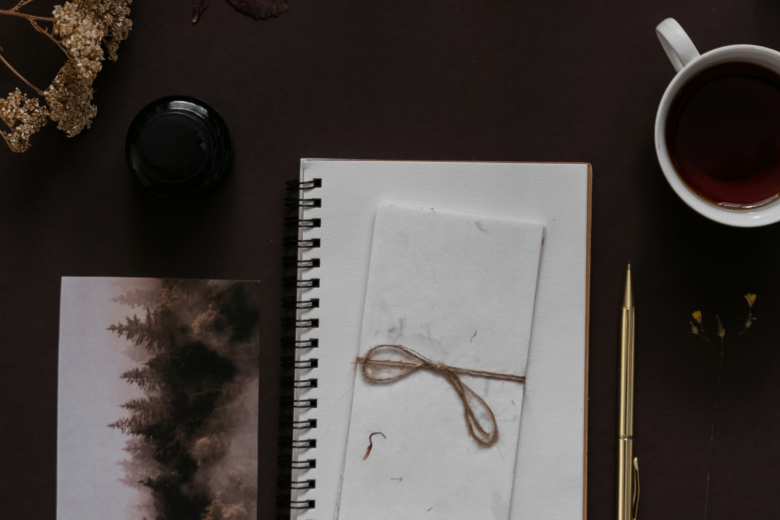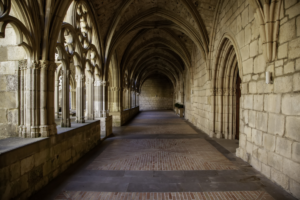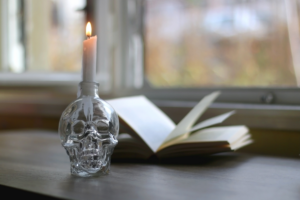The Dark Academia aesthetic has captivated the imagination of many, with its mysterious and intellectual allure. Rooted in a love for literature, classical art, and scholarly pursuits, this aesthetic evokes a sense of nostalgia for a bygone era of academic rigor and creativity. When it comes to photography, capturing the Dark Academia aesthetic involves more than just shooting in dimly lit spaces or using vintage props. It’s about creating an atmosphere that conveys a mood of introspection, intellectualism, and a subtle, almost melancholic elegance.
In this guide, we will explore how to capture the essence of Dark Academia through photography. Whether you’re aiming to create moody portraits, detailed still life shots, or expansive scenes that evoke a sense of mystery and nostalgia, understanding the key elements of the aesthetic is essential. From choosing the right locations and lighting to styling your subjects and enhancing the mood in post-processing, this article will provide you with actionable tips to create photographs that embody the timeless elegance of Dark Academia. Let’s delve into how you can bring this captivating aesthetic to life through the lens.
The allure of Dark Academia extends beyond its visual appeal; it taps into a deeper sense of intellectualism and cultural appreciation. For many, it evokes an image of late-night study sessions, candlelit libraries, and the endless pursuit of knowledge. The aesthetic draws inspiration from classic literature, philosophy, and art, which often explore themes of existentialism, melancholy, and the complexity of the human experience. This connection to history and the arts gives Dark Academia a timeless quality, making it not just a visual style, but a way of thinking and seeing the world.
Photographing the Dark Academia aesthetic requires a careful balance of elements that reflect these themes. It’s not just about capturing the right scene, but also about creating an emotional resonance that reflects the essence of the aesthetic. The play between light and shadow, the richness of textures, and the careful inclusion of props that symbolize intellectual and artistic pursuits all contribute to creating a captivating Dark Academia image. Whether it’s a solitary figure deep in thought, a collection of vintage books, or the quiet beauty of an old, ivy-covered building, every detail must evoke the reflective, sophisticated, and somewhat melancholic mood that defines the aesthetic.
The beauty of Dark Academia photography is in its versatility and depth. While the aesthetic draws on classic elements, it also allows room for personal interpretation and creativity. Each photographer brings their unique perspective, which is what makes this genre so rich and diverse. Whether you prefer a more modern take or want to remain deeply rooted in historical references, the key is to focus on capturing the quiet elegance and intellectual beauty that the aesthetic is known for. This guide will show you how to harness your creativity, combine different elements, and use your camera to explore the captivating world of Dark Academia photography.
1. Understanding the Core Elements of Dark Academia Aesthetic
The Dark Academia aesthetic draws heavily from the world of intellectualism, nostalgia, and timeless beauty. Its foundation lies in the celebration of academic life, classic literature, and art from the 18th and 19th centuries. Key elements of this aesthetic include muted tones, antique furnishings, vintage clothing, and a sense of romanticism. In photography, the aesthetic is often conveyed through a moody, atmospheric vibe, where the focus is on introspection, learning, and personal growth.
This aesthetic isn’t just about the physical elements; it’s about creating an emotional connection through your photos. To truly capture Dark Academia, you must focus on the feeling of nostalgia, mystery, and intellectualism. It’s about portraying a world where knowledge and artistry intertwine, offering a glimpse into a space that feels timeless and introspective.
2. Choosing the Right Location: Libraries, Vintage Interiors, and More
The location sets the tone for any Dark Academia photoshoot. Ideal settings often include places that evoke a sense of old-world charm—think dimly lit libraries, vintage study rooms, historical buildings, or cozy, antique-filled interiors. Locations with large wooden bookshelves, wrought iron furniture, and classical architecture work especially well, as they exude an academic, scholarly vibe.
Additionally, outdoor settings such as old universities, ivy-covered walls, or parks with classic statues and pathways can serve as the perfect backdrop for Dark Academia-themed photoshoots. Seek out locations that feel steeped in history and knowledge, offering a visual representation of the aesthetic’s intellectual core.
3. Lighting Techniques: Playing with Shadows and Moody Ambience
Lighting is one of the most crucial elements in capturing the Dark Academia mood. The aesthetic thrives on low-key lighting that highlights shadows and creates a sense of mystery. Natural light from windows, soft lamps, or candlelight are great choices, as they add warmth and intimacy to your photos.
Consider shooting during the golden hour—just before sunset or after sunrise—when the light is softer and has a warm, almost vintage feel. For more dramatic images, try incorporating shadow play by using harsher light sources or experimenting with silhouette shots. Avoid overly bright, artificial lighting that could detract from the moody, atmospheric look of the Dark Academia aesthetic.
4. Styling the Subject: Clothing, Props, and Color Palettes
The clothing and styling choices of your subject are essential in bringing the Dark Academia aesthetic to life. Look for outfits that are timeless, elegant, and classic. Think tweed jackets, tailored trousers, woolen sweaters, and vintage-inspired dresses. Accessories like glasses, scarves, pocket watches, and hats can also add to the scholarly vibe.
For props, books are an obvious and essential choice. A stack of old volumes, antique writing utensils, or even a cup of tea can help bring depth to your scene. As for color palettes, Dark Academia leans toward muted, earthy tones—rich browns, deep greens, burgundy, charcoal gray, and touches of gold. These colors create a cozy, inviting atmosphere while maintaining an air of sophistication.
5. Composition Tips for a Dark Academia Atmosphere
To capture the essence of Dark Academia in your photos, composition plays a vital role. Create dynamic images by incorporating leading lines, such as the edges of bookshelves, staircases, or vintage furniture. Frame your subject in such a way that they appear immersed in their surroundings—whether reading a book, writing, or gazing out the window.
Use symmetry and balance to evoke a sense of stability, which is often associated with the academic setting. However, feel free to experiment with asymmetry for a more whimsical or poetic effect. Consider the rule of thirds, but don’t shy away from breaking conventional rules if it helps you capture the mysterious and academic atmosphere you’re aiming for.
6. Post-Processing: Enhancing the Dark Academia Mood Through Editing
Post-processing is key to perfecting the Dark Academia aesthetic in your photos. Start by adjusting the exposure and contrast to emphasize shadows and add depth to your images. Reducing the brightness slightly and increasing the shadows will help give your photos that moody, atmospheric look.
Next, consider enhancing the colors to align with the earthy, muted tones typical of the Dark Academia palette. A slight desaturation or a faded look can add a vintage feel to your images. Warm sepia or greenish filters can work well, as they enhance the timeless and nostalgic qualities of the aesthetic.
7. Incorporating Books, Stationery, and Other Classic Elements
Books and stationery are central to Dark Academia photography. Incorporating them into your shots adds authenticity and reinforces the theme of intellectual pursuits. Books with old covers, journals with handwritten notes, and fountain pens are all props that can evoke a sense of history and intellectual passion.
Arrange these elements thoughtfully in your shots—perhaps with an open book resting on a desk, a pen beside an inkwell, or a worn notebook with vintage pages. These small details enhance the narrative of the Dark Academia aesthetic, making the scene feel lived-in and meaningful.
8. Photography Gear Recommendations for Dark Academia Photoshoots
While any camera can capture a Dark Academia photo, certain gear can help elevate the mood and overall quality. A DSLR or mirrorless camera with manual settings gives you full control over your exposure, aperture, and depth of field. A fast lens (such as a 50mm f/1.8) is ideal for creating a blurred background and allowing more light into the frame, which is useful for moody lighting conditions.
For lighting, consider using a softbox or diffuser to soften harsh natural light or to create more contrast. A tripod will also be helpful for longer exposure shots or if you’re aiming for a consistent look throughout your session.
9. Exploring the Influence of Classic Art and Literature in Dark Academia Photography
Dark Academia is deeply influenced by classic art, literature, and philosophy. Incorporating references to famous works of art, historical figures, or literary masterpieces can add layers of meaning to your photographs. You could draw inspiration from Renaissance paintings, 18th-century portraits, or iconic literary works like those by Edgar Allan Poe, Oscar Wilde, or the Brontë sisters.
Visually referencing these works can help solidify the intellectual and romantic foundations of Dark Academia. Whether through the use of certain poses, compositions, or themes, drawing on these influences will deepen the impact of your images and make them feel more profound and thought-provoking.
This comprehensive guide covers the essential elements of Dark Academia photography, providing you with the tools to capture its intellectual, moody, and timeless aesthetic.
Mastering Dark Academia Photography: Tips for Creating Timeless, Intellectual Images
Capturing the Dark Academia aesthetic in photography is about more than just the visual elements; it’s about evoking a mood that resonates with the intellectual and romantic spirit of the genre. By focusing on key aspects like location, lighting, styling, and composition, you can create images that transcend the ordinary and transport your audience to a world steeped in nostalgia, mystery, and timeless beauty.
Mastering Dark Academia photography involves immersing yourself in the atmosphere you want to create. Every shot should tell a story, inviting the viewer to step into a space that celebrates learning, creativity, and the arts. Whether you’re working with natural light, vintage props, or classic color palettes, the goal is to craft photographs that feel both intimate and intellectual, evoking a sense of history and timeless elegance.
As you continue to refine your skills, don’t be afraid to experiment with different locations, compositions, and post-processing techniques. The beauty of Dark Academia photography lies in its flexibility and the personal touch you can add to each image. Stay true to the essence of the aesthetic—imbued with nostalgia, intellectual passion, and quiet introspection—and you’ll be able to create photographs that stand the test of time, inviting others to explore the depths of this captivating world.
In the end, Dark Academia photography isn’t just about capturing a scene—it’s about capturing a feeling. With the right approach, you can immortalize this aesthetic in a way that speaks to the heart and mind, creating images that will resonate for years to come.
As you delve deeper into Dark Academia photography, it’s important to remember that each photo should evoke a specific feeling—an invitation to explore intellectual pursuits and reflect on the quieter moments of life. This aesthetic thrives on subtlety, meaning that even the smallest details can make a big impact. Whether it’s the worn pages of a beloved book, the play of light on an antique desk, or the contemplative gaze of a subject lost in thought, every element in your frame should contribute to the overall mood you wish to convey. The beauty of Dark Academia lies in its ability to evoke complex emotions and narratives with minimalism and restraint.
While technical aspects such as lighting and composition are essential, never underestimate the power of the story your image tells. The Dark Academia aesthetic is not just about what is visible in the frame but also what is implied. It’s about creating a world that feels lived-in, a place where knowledge and beauty coexist. The use of props, such as vintage books, classic writing instruments, or items that hint at a creative pursuit, can add layers of meaning to your photographs, inviting the viewer to imagine the stories and ideas behind the scene.
Furthermore, Dark Academia photography invites you to look beyond the surface and explore the deeper emotional connections between your subject and their surroundings. Is your subject a student lost in their studies, an artist in the midst of creation, or a philosopher contemplating life’s mysteries? By paying attention to the subtle dynamics between people, objects, and the space they inhabit, you can create images that feel rich with history and personal reflection.
Finally, as you continue to refine your Dark Academia photography, remember that this genre is always evolving. While it draws heavily from the past, it also allows room for modern interpretations. The aesthetic is fluid and adaptable, meaning you can inject your own voice and perspective into your images. Experiment, explore, and trust your instincts to create photographs that reflect both the intellectual depth and the timeless allure of the Dark Academia world. With each shot, you have the opportunity to create something truly unique—images that are not only visually stunning but also deeply thought-provoking and emotionally resonant.




